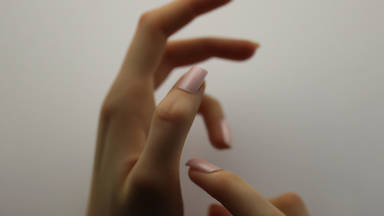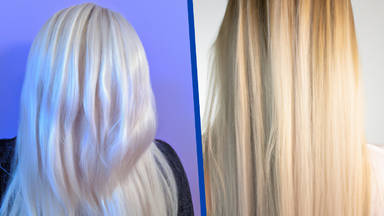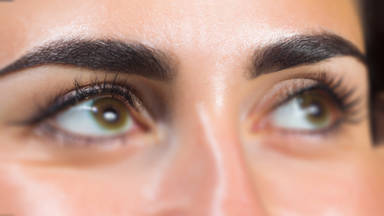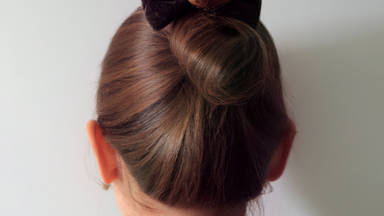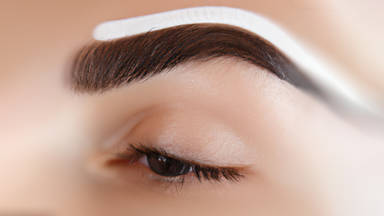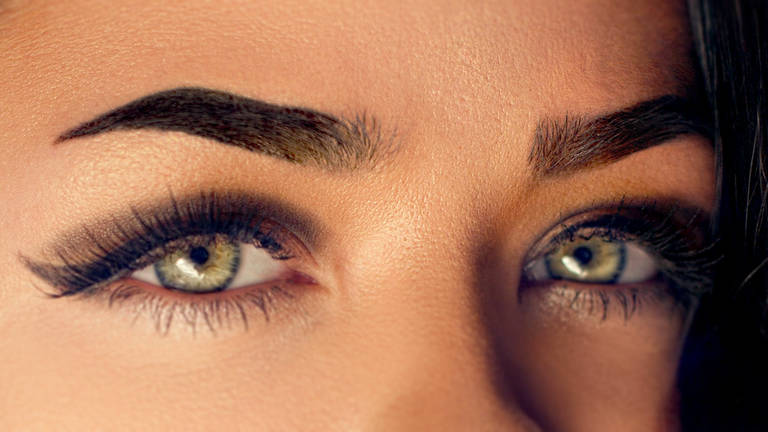
In this article, we will discuss the process for micropigmenting eyebrows. The technique of micropigmentation, or cosmetic tattooing, is proving to be a very popular way to enhance the appearance of eyebrows in a realistic, natural way.
Using a piece of cotton soaked in smeared sterilized material, we clean the eyebrow area in preparation for the procedure. We will design the eyebrows according to existing design standards and what the individual has requested, and if they approve the design, we can begin the micro-pigmentation process.
While most eyebrows have straight hair on their crowns, some eyebrows have diagonal growth on their crowns and a client may desire modifications to the eyebrows on the crowns. A person who has a round crown with hair that leans to the side may want to alter this design to make the hair look straight and rectangular instead. In every case, we should design the eyebrows appropriately before proceeding.
When your client wants the hachures to be very thin, then I suggest using the number five slope cartridge. This is because the result will look more natural if the hachures are very thin. A few important factors must be considered when designing eyebrows: culture, fashion, and personal preferences. Keeping the character of the person in mind is also crucial.
Following the design stage, remove excess hair, clean the brow area, and show the person a preview of the desired outcome. Proceed only if they are satisfied with the changes. Changes to the appearance can sometimes be difficult to accept. You should always remember that the purpose of the change is to enhance the person's beauty, not to make them unorthodox.
When a person has natural eyebrows, the process of brow pigmentation takes two to three sessions. In the first session, we focus primarily on the person's desired design and color. Due to the fact that we do not know how pigmentation will develop on the skin beforehand, during the second session we can analyze and check the skin and if the individual wants, we can make the color darker or lighter.
It is important to take extra care while designing the second eyebrow to ensure the angles, the crown's distance to the arch, and arch to the eyebrow tail. When you are lying down, the face muscles change so you should also consider how the person would look with the new eyebrows when sitting down.
One of the most common issues people encounter after eyebrow shaping and pigmentation is their eyebrows looking thicker than they expected after eyebrow design and pigmentation. It is important to keep in mind that when you pencil in your eyebrows, the eyebrow looks thicker because the hair follicles are united and there are no gaps between them. When we pigment the eyebrows, this will change.
As well as following established standards, you should also be aware that everyone has different eyebrows with different hair patterns, and your design should not deviate too much from the natural formation of their eyebrows. By doing this, the design will appear more natural.
After you have designed the eyebrows and provided a basic pigmentation, you can remove the design and apply anesthetics so that you can proceed with the process. This process may be slightly painful depending on the individual's skin and pain tolerance.
A person's pain tolerance and skin type play a very important role in how uncomfortable this process can be. People who have clear skin will usually feel less pain, while those with oily skin will feel more discomfort.
A white area around the eyebrows is one of the main indicators of numb skin after applying anesthetic, which is caused by the epinephrine in the anesthetic. However, most people with scratches on their skin need to wait no more than two minutes.
As you go through this process, You should keep in mind that since this is happening near the epidermis, where blood vessels and hair roots are less congested, the process shouldn't be painful and shouldn't cause bleeding.
If you go too deep, you may damage the hair roots or blood vessels. Besides, blood may decrease the skin's ability to absorb pigments. So be careful not to go too deep because it may cause discomfort and negatively impact the pigmentation process.
If you want to re-apply your hachures, always apply them directly on top of the previous ones to preserve the delicacy of the lines. Ensure that you remove all the anesthetic material before starting the work again.
The ink itself plays a significant role in how effective the pigmentation process is, as well as the skin type. As a rule of thumb, the lighter an ink color is, the less durable and long-lasting the pigmentation process will be.
It is important for people who choose to undergo micropigmentation to understand that the restoration process will depend on the color they choose. If you choose a light color, you should not expect the pigmentation to take effect in one session.
The person should also know that the pigmentation may be reduced by 60% or 70% in some areas and less in some areas during the restoration process. You should explain that these problems can be resolved during the restoration process.
The number of hachures that you apply to the eyebrow depends on its natural density. If the eyebrow is extremely thin, you can apply the hachures further apart. Similarly, if the person has thick eyebrows, it's better to make the lines close to each other in order to blend with the natural eyebrows. For the tip of the eyebrows, hachures should always be less dense than the rest.
Micropigmentation is basically creating lines similar to hair to increase beauty and harmony. Be very careful and always strive to deliver your best work since the person will be living with the results for a long time.

